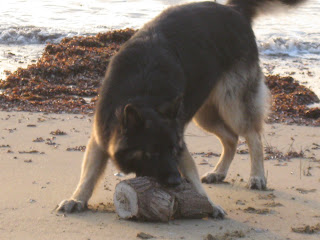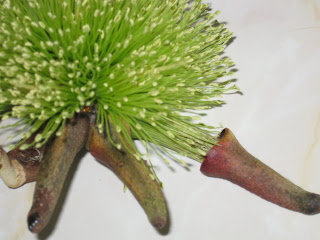



Yesterday we shared a pot of tea with Peter Dann, a marine biologist who's been working with Little penguins for all of his working life -- and who we first met in 1981, on King Island. Whenever we meet up with Peter, even after an interval of several years, it's as if we've seen him yesterday. He's wonderful company and has a vast knowledge for all things natural.
Peter amused us by telling of a recent incident at the Phillip Island Nature Park Animal Hospital, where they were treating penguins suffering heat-stroke. All that was required was to put the penguins in a refrigerator for a few minutes, and then tube feed them fluids. It reminded me of occasions when we had sheep with lambs suffering from exposure to icy winds. We simply put the lambs in an oven for five to 10 minutes, tube fed them milk -- and they revived magically.
Every now and then a dead penguin is washed ashore on Phillip Island and we always check it for either a tag on its flipper or a microchip on its back.
The microchips used on penguins are the same as those used on pet dogs and cats. Peter Dann and other marine biologists have been studying the movements and life cycle of Little Penguins (commonly called fairy penguins) for well over 30 years, and these microchips and tags have helped in the gathering of information.
When we lived and farmed on King Island in the 1980s, we were involved with the banding of penguins on our coastline. One of the penguins we banded on King Island, Peter Dann picked up on Phillip Island one year later. And then we found that same penguin dead in our King Island rookery a couple of years further down the track.
Bass Strait is a turbulent stretch of water and it's surprising to find that penguins move so freely between islands, with some venturing as far south as southern Tasmania.
There is nothing quite as delightful as watching penguins tumble out of the waves at sundown, and to see them waddle up the beach in their quaint little dinner suits, to be met at the entrance to their burrows by hungry trilling chicks.
















































